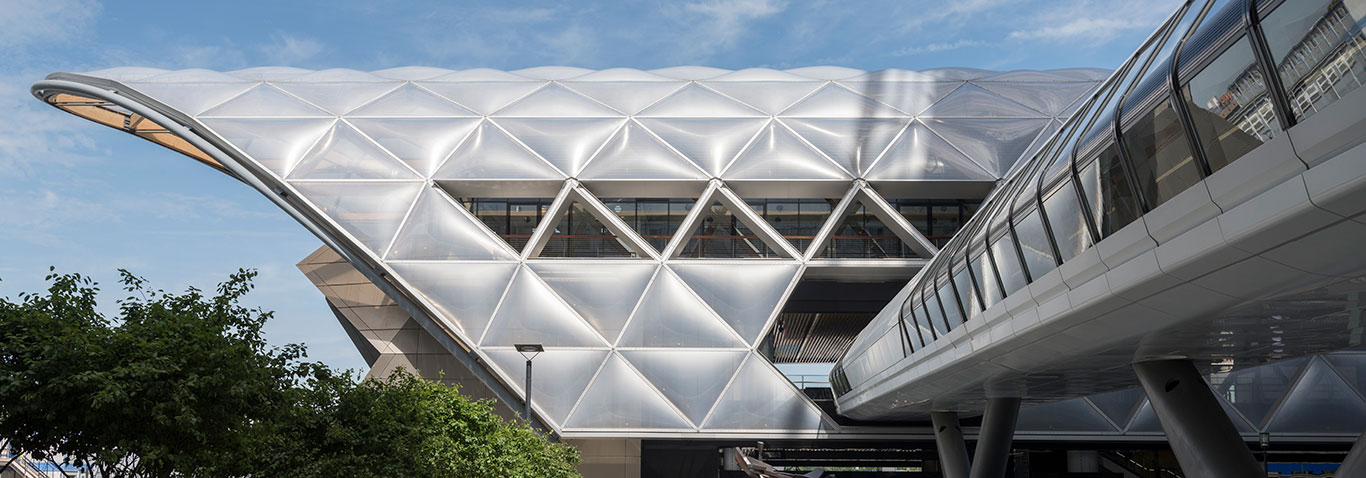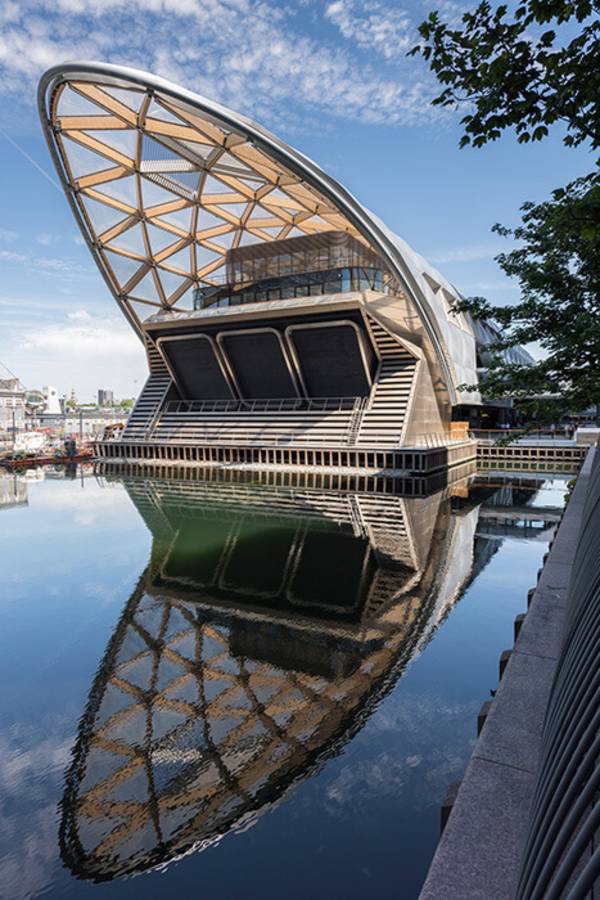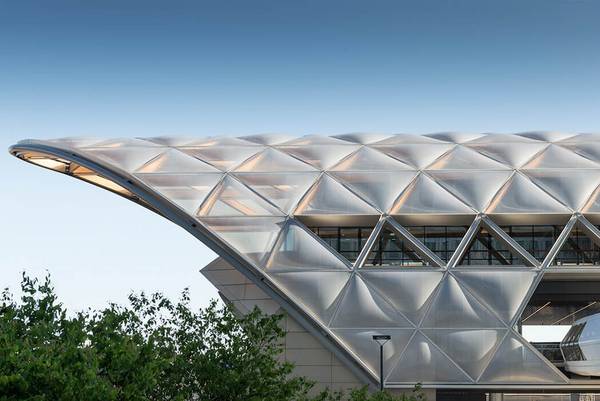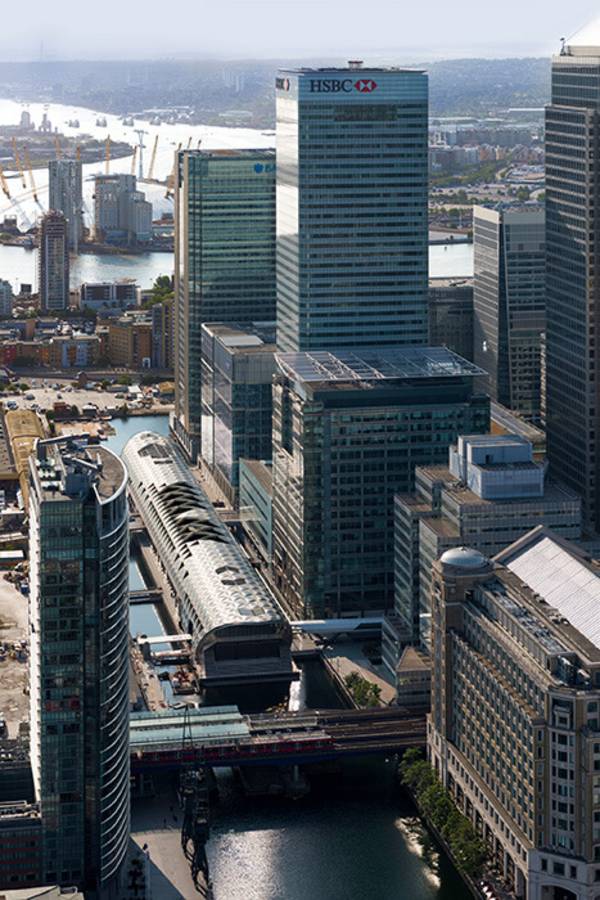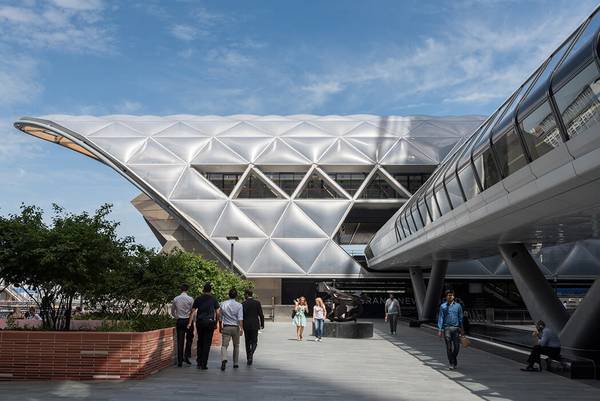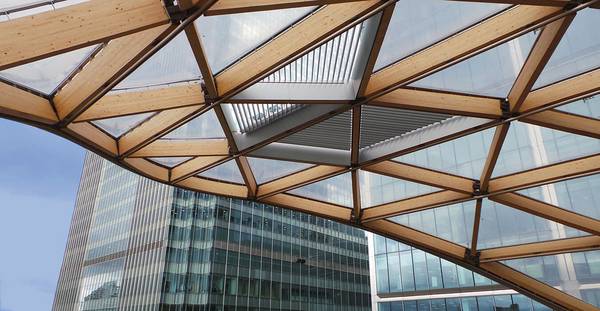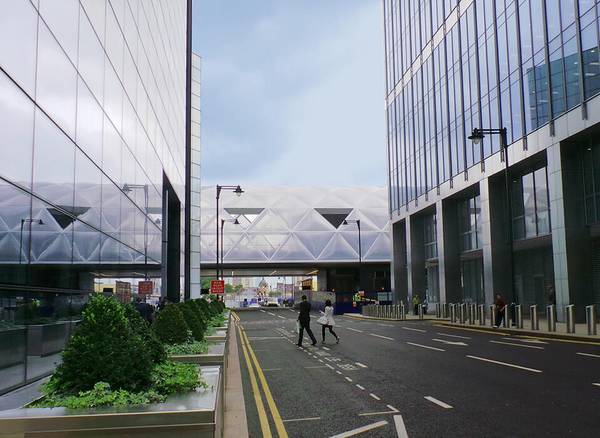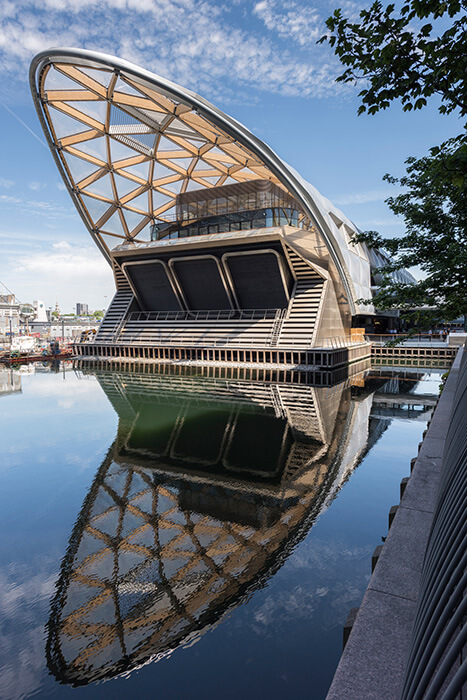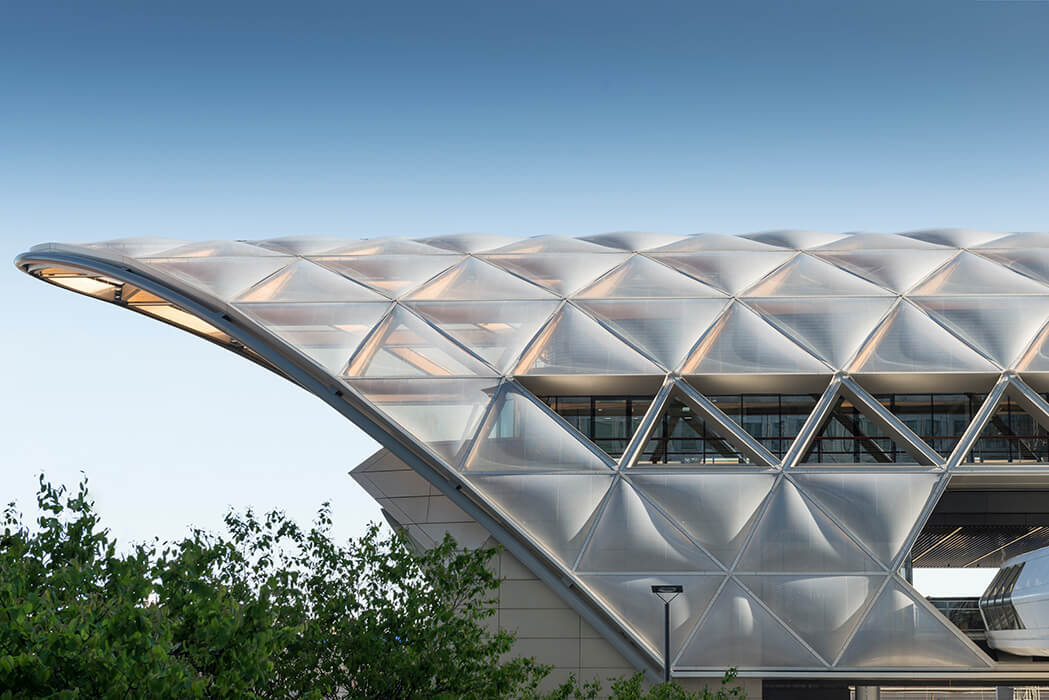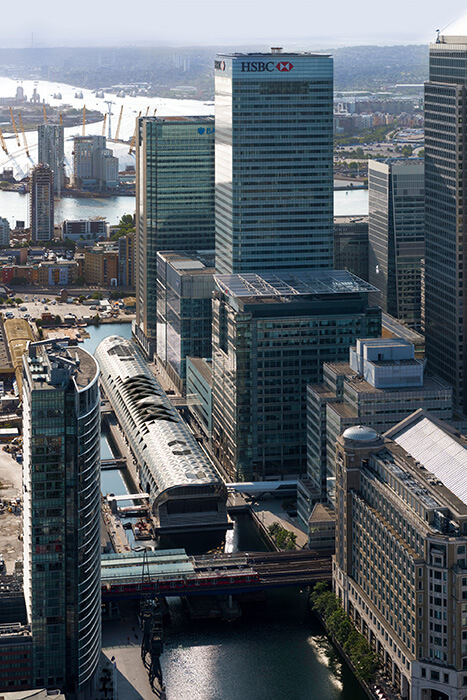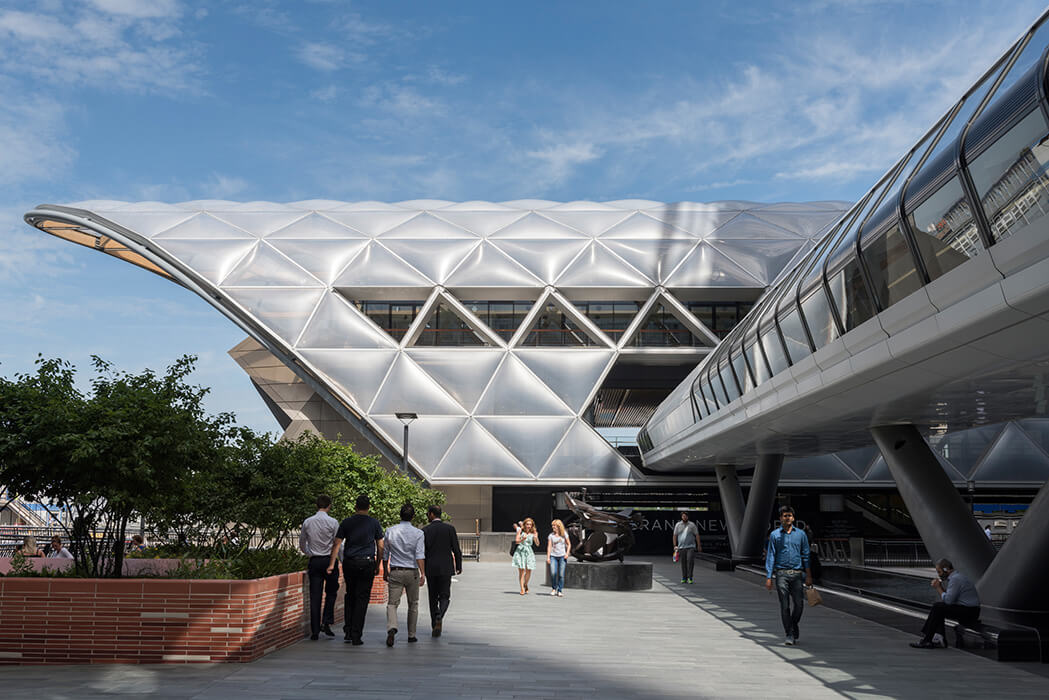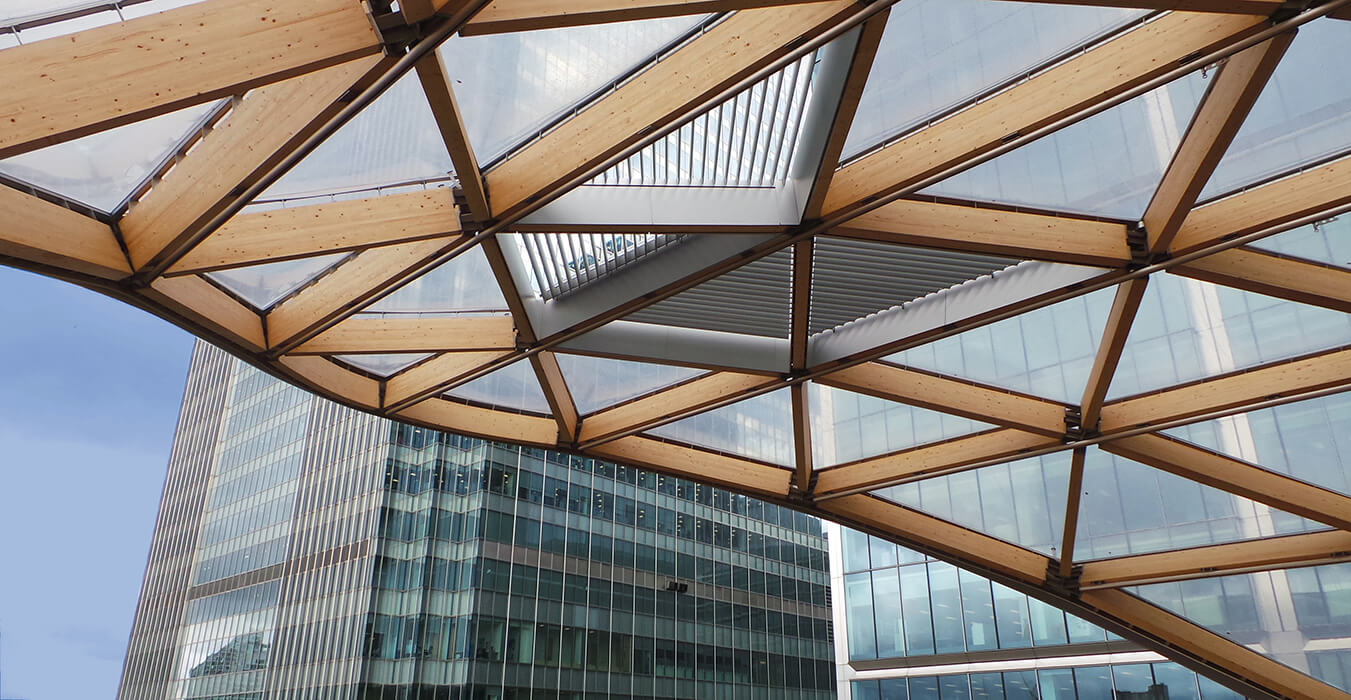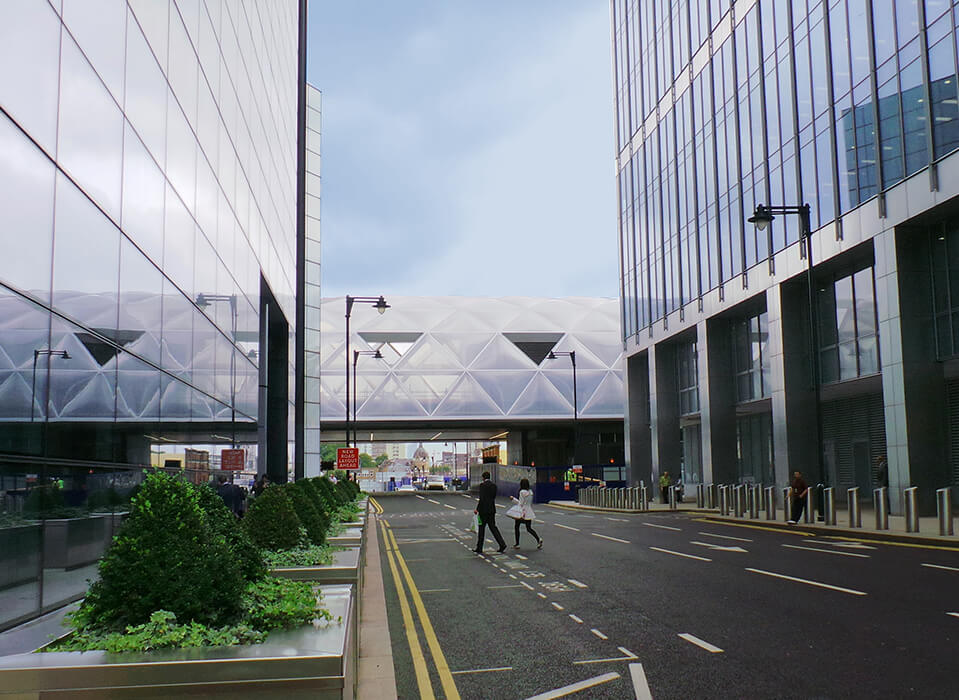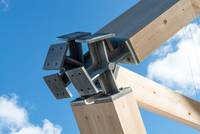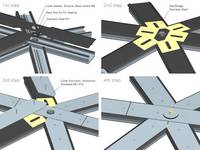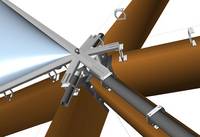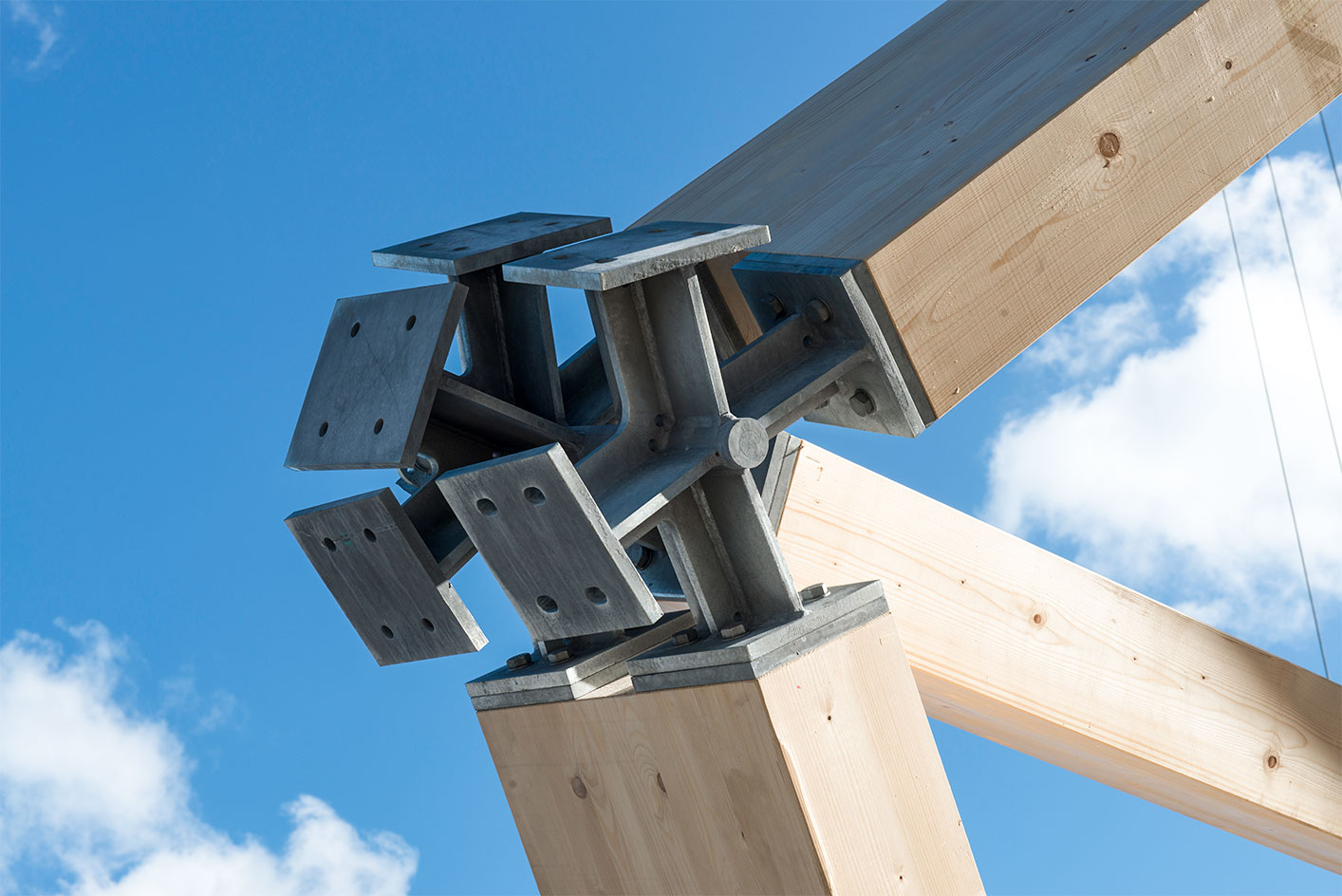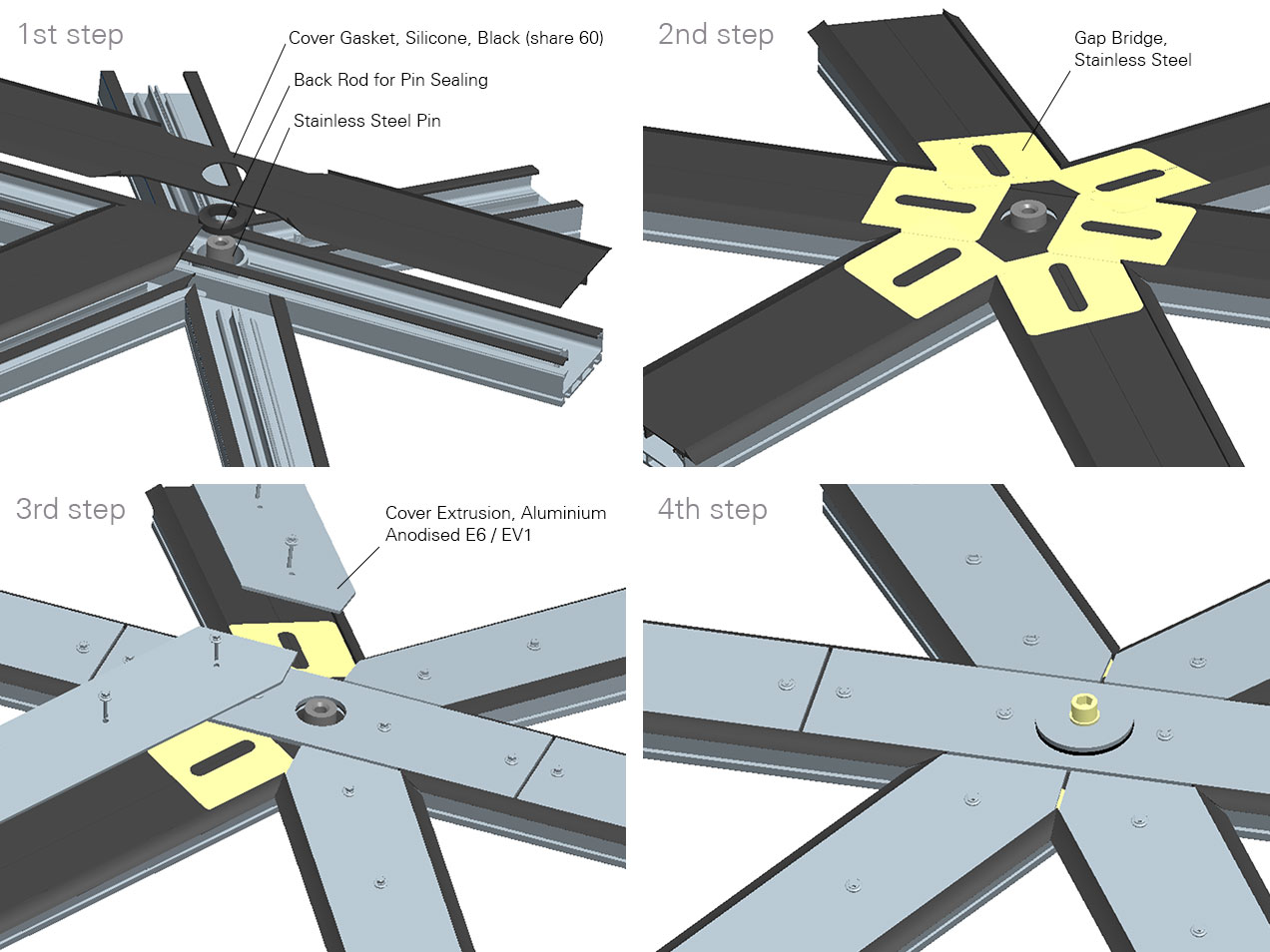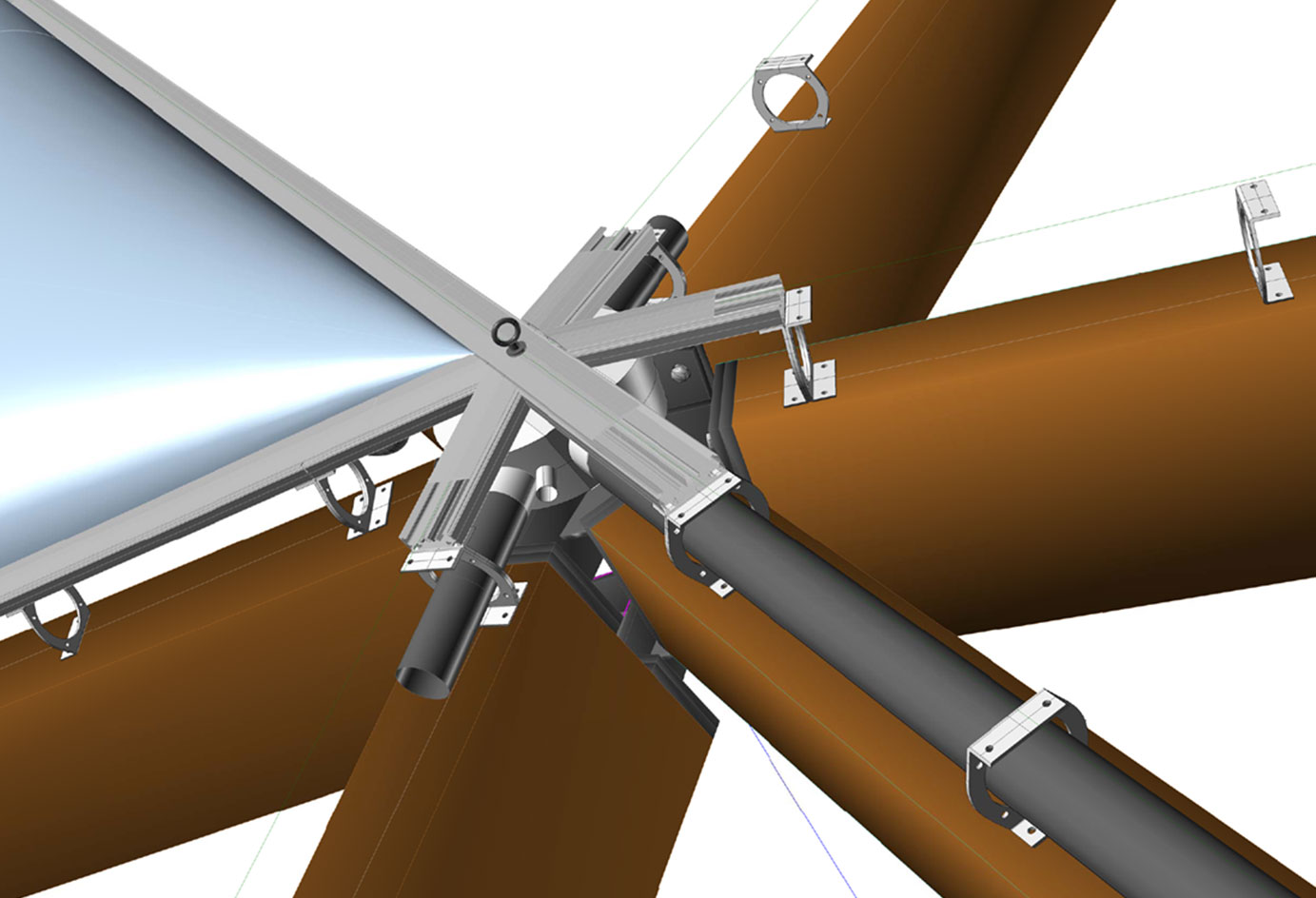The demanding architectural stipulations are being transformed in a cooperative venture between seele and timber construction specialist Wiehag. Curving glued laminated timber beams form a barrel-vault lattice structure. In the middle of the building the beams are vertical, but on either side they tip over more and more towards the gable ends, finally cantilevering up to 30m out over the water.
seele is the first company to use this exciting combination of materials. Never before have ETFE cushions been combined with timber on this scale. The double curvature of the timber structure in some places results in numerous different triangular formats into which the double-layer ETFE cushions must fit exactly. A new system of nodes and members was specially devised by seele for fixing the ETFE cushions. Depending on the g-value required, the membrane cushions are printed with three different patterns of dots and transparent or matt foil chosen for the inner layer to suit the internal usage. This project gave façade specialist seele a chance to show off its strengths in turning an architectural vision into a bespoke envelope.
Reference overview and Header image: © Nigel Young / Foster + Partners
